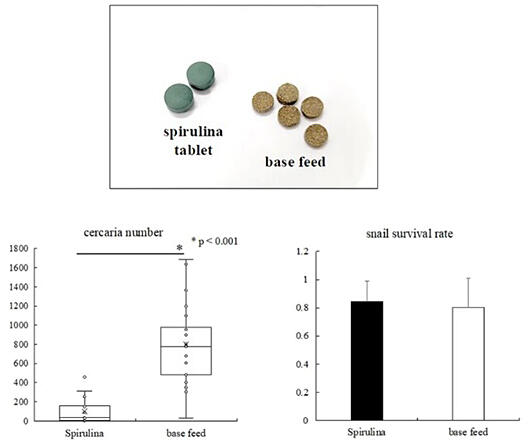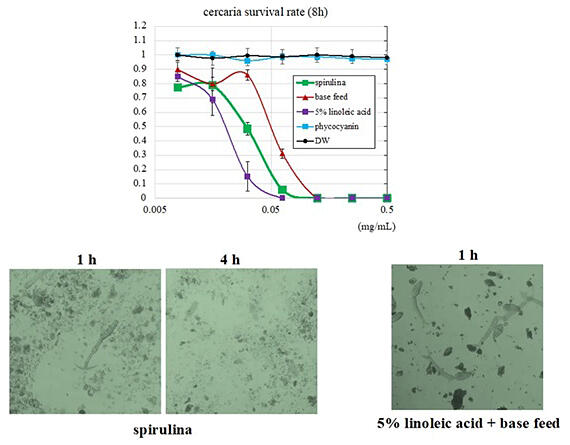Schistosomiasis is a parasitic disease infecting approximately 250 million people worldwide, causing serious complications in the liver and intestines. Currently, while praziquantel exists as an effective treatment, repeated reinfection makes eradication difficult. Notably, larvae (cercariae) that serve as infection sources develop inside intermediate host snails and percutaneously infect humans in water. Therefore, countermeasures targeting snails become crucial. A research team from the Institute of Science Tokyo Graduate School of Medical and Dental Sciences, led by Lecturer Takashi Kumagai in the Faculty of Medicine (at the time of research, currently Associate Professor at Nippon Bunri University's Department of Health Sciences) and Professor Tomoko Ishino, has developed a new strategy toward eradicating schistosomiasis, one of the neglected tropical diseases, in collaboration with KYORIN and DIC. Their research was published in Tropical Medicine and Health.

https://tropmedhealth.biomedcentral.com/articles/10.1186/s41182-025-00727-3
Provided by Nippon Bunri University
Spirulina is a type of cyanobacterium widely used as a supplement for humans, livestock, and tropical fish. Spirulina contains many effective components; of these, a component called phycocyanin is also used as a natural blue pigment for food.
The research team accidentally discovered that when they infected their cultured snails (Biomphalaria glabrata) with Schistosoma mansoni and provided spirulina-containing feed, cercariae emission was significantly reduced.
In this experiment, after infecting the intermediate host B. glabrata with Schistosoma mansoni miracidium larvae, the team fed the host feed containing spirulina or basic feed 200 milligrams twice weekly for six weeks starting from the first day of infection. As a result, they confirmed that cercariae emerging from snails fed spirulina feed were suppressed by up to 88%.
Moreover, the spirulina feed did not affect snail survival rates and demonstrated a specific effect against schistosomes. Furthermore, the suppression effect was highest in snails during early infection stages, suggesting the feed potentially impacts larval development early on. Since spirulina is rich in phycocyanin, the team verified its standalone effect by adding phycocyanin to basic feed and conducting similar experiments. However, no cercariae emission suppression effect was confirmed.
Next, they investigated the direct impact of spirulina feed powder on cercariae released from snails. Both spirulina and basic feed powders showed killing effects on cercariae. This killing effect was considered to be caused by cercariae attraction and tail detachment, similar to linoleic acid effects reported in previous research.
Upon analyzing fatty acid components in spirulina and basic feeds, they confirmed high linoleic acid content in both. Creating a basic feed with added linoleic acid and evaluating its impact on cercariae showed strong killing effects.
However, even when adjusting linoleic acid content to nearly equal levels, spirulina feed demonstrated twice the killing effect of basic feed, suggesting the involvement of components other than linoleic acid. Moreover, feeding linoleic acid-containing feed to snails did not show the same cercariae emission suppression effect as spirulina feed.

https://tropmedhealth.biomedcentral.com/articles/10.1186/s41182-025-00727-3
Provided by Nippon Bunri University
Currently, niclosamide is used for snail elimination, but it is costly and raises environmental concerns. The newly developed spirulina feed is expected to be a low-environmental-impact new strategy, being harmless to snails while selectively effective against schistosomes.
The WHO aims to eliminate schistosomiasis as a public health problem by 2030. This achievement could represent a significant step toward eradication. The research group plans to continue investigating field trials in endemic regions, identifying spirulina's effective components, and exploring applications for other parasites.
Journal Information
Publication: Tropical Medicine and Health
Title: Development of a spirulina feed effective only for the two larval stages of Schistosoma mansoni, not the intermediate host mollusc
DOI: 10.1186/s41182-025-00727-3
This article has been translated by JST with permission from The Science News Ltd. (https://sci-news.co.jp/). Unauthorized reproduction of the article and photographs is prohibited.




